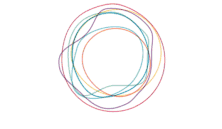“How to use customer obsession to build products that delight”
“How to use customer obsession to build products that delight”
Thoughts from my first Product Tank meet-up
Can online be an experience?
 I had the personal pleasure to attend and host our first ProductTank meet-up in Barcelona last week with guest speaker Jeff Gothelf, author of Lean UX and Sense and Respond, and organised by Gino Micacchi.
I had the personal pleasure to attend and host our first ProductTank meet-up in Barcelona last week with guest speaker Jeff Gothelf, author of Lean UX and Sense and Respond, and organised by Gino Micacchi.
It was a great event and very insightful with Jeff was answering some really good questions proposed, and then voted on, by the audience. I also had the opportunity to meet, discuss and feel connected with some interesting minds, and learn about lots of great free-spirited ideas like ibreve.com , holonic.systems and featureupvote.com , all started by strong imaginations.
In this post, I want to try to present a sketch of the ideas I heard from Jeff and some of the other sharp minds in the room, together with some of my own thoughts; ideas that I believe can elevate a Digital Product from being merely a functioning System to becoming also a Good Experience. As the event started I was given the opportunity to ask the first question: If a Good Experience in the physical world is a deep and rich emotional experience, how does this translate to a Good Experience in the digital world? I really enjoyed Jeff’s answer whereby he argued that a Good Experience in the digital world needs to be framed within the goal that the user aims to accomplish; if the goal is to listen to music, or to get a loan, or to buy a bottle of wine, then the notion of what is a good experience is determined by whether those goals are fulfilled.
Another very interesting question that I enjoyed touched on the idea of customer desire and centricity:
 Jeff argued that even though we may not know what people want, we should know how to succeed at fulfilling their aims, and measure that success by the good behavioural changes that the product returns.
Jeff argued that even though we may not know what people want, we should know how to succeed at fulfilling their aims, and measure that success by the good behavioural changes that the product returns.
I love this idea that moments of joy in digital are real, that we can get them when we are pleasantly surprised by something that fulfils our goals, even if we don’t immediately know what these might be. These moments of joy create good experiences, particularly when the design elements within which we interact are capable of communicating, expressing and anticipating our goals with clarity.
I love the idea of seeing users as subjects as opposed to objects, data and events as multi-dimensional as opposed to linear, and metrics as a way to generate ideas and inspiration as opposed to telling us what to do or dictate to us how to do it.
At the end of the day, the fantastic products and inventions we embrace are not sourced from a rational interpretation of the world around us but from our dreams which makes me wonder: Is there something more to a Product than reason and logic?











